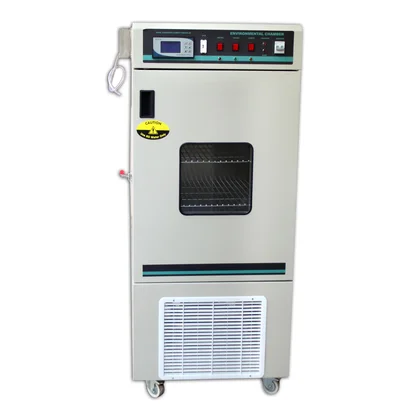How Humidity Chamber Works
Humidity chambers, also known as climate chambers or environmental test chambers, are vital tools in research, quality control, and product development across industries. At Ferrotek Equipments, we specialize in designing reliable, high-performance humidity chambers tailored to meet the precise testing needs of various sectors. But have you ever wondered how a humidity chamber works? Let’s take a closer look at the mechanism and functionality behind these essential testing units.
What is a Humidity Chamber?
A humidity chamber is a controlled environment used to simulate specific temperature and humidity conditions for testing the durability, reliability, and performance of materials or products. Whether it’s electronics, pharmaceuticals, polymers, or automotive parts—these chambers help determine how products behave under different climatic conditions.
Working Principle of a Humidity Chamber
Humidity chambers function by carefully regulating temperature and moisture levels within an enclosed space. Here's how the system works step by step:
1. Humidity Generation System
The chamber includes a humidification unit that generates moisture, typically by:
Steam Injection: Directly introducing steam into the chamber.
Water Bath Evaporation: Heating water in a pan to generate vapor.
Ultrasonic Nebulization: Using ultrasonic vibrations to turn water into fine mist.
The system ensures the chamber reaches desired humidity levels, usually ranging between 20% to 98% relative humidity (RH).
2. Dehumidification Process
To simulate low-humidity conditions, the system also includes a dehumidifier or a refrigeration system that condenses excess moisture from the air, reducing RH to as low as 10%. This dual control of adding or removing moisture creates highly flexible testing environments.
3. Temperature Control
Temperature control is equally important. Precision heaters and cooling coils help maintain consistent temperatures, generally from -70°C to +180°C, depending on the chamber type. Temperature fluctuations can affect humidity levels, so advanced sensors are used to maintain a balance.
4. Sensors and Feedback Loops
Modern humidity chambers are equipped with digital sensors, controllers, and PID feedback systems. These sensors continuously monitor RH and temperature, and the system makes automatic adjustments to keep conditions stable throughout the testing process.
5. Air Circulation
To ensure uniform conditions throughout the chamber, an internal fan circulates air constantly. Proper circulation prevents hotspots or cold zones, ensuring that all test samples are exposed to the same conditions.
Applications of Humidity Chambers
Humidity chambers are used in several industries for:
Material testing for corrosion resistance, cracking, or warping.
Electronics lifecycle testing under extreme conditions.
Pharmaceutical stability studies to assess product shelf-life.
Automotive part testing for humidity-induced malfunctions.
Paint and coating validation in high-humidity conditions.
Why Choose Ferrotek Equipments?
At Ferrotek Equipments, we offer customized humidity chambers built with cutting-edge components and intelligent control systems. Our chambers are designed for accuracy, durability, and easy operation, making them ideal for both research and industrial settings. From compact benchtop models to large walk-in units, we cater to a wide range of environmental testing needs.
Conclusion
Understanding how a humidity chamber works reveals its critical role in product reliability and safety. By simulating real-world environmental conditions, these chambers ensure that your products meet quality standards before reaching customers.
If you’re looking for high-performance humidity chambers, trust Ferrotek Equipments to deliver precision-engineered solutions that stand the test of time.



Comments
Post a Comment